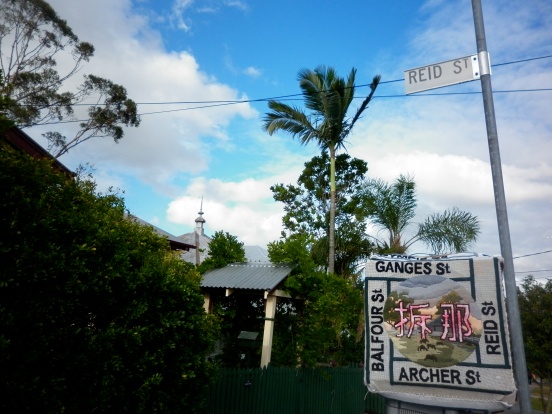The street names refer to employers of Chinese labourers and a ship, which brought them to Australia.
The symbol acknowledges the presence of Chinese people in this part of NSW before it was called Queensland. The symbol also draws attention to the way art and poetry are being used in China to grapple with their own history of dispossession in the name of development.
“All over China, 拆 is spray-painted on the sides of buildings slated for demolition…
Chāi nǎ mimics the sound of the English word “China.” “Demolish” (拆 chāi) has a special meaning in contemporary China, as demolitions, often forced on tenants with little or no compensation, are one of the major sources of social instability. Developers and the local government profit greatly from forcibly evicting people from their homes to build on the land.” (http://chinadigitaltimes.net/space/Demolish_it)
“In 1847 the first group of indentured Chinese labourers arrived in the port of Sydney as part of what over the following six years was to become a systematic trade. The reactions within colonial society prompted by this trade were in the main negative, and ranged from outright admonition of the importers and employers for being involved in what was termed nothing less than a covert slave trade, to a qualified acceptance of the trade as the only measure available to those employers, specifically the squatters, in need of labourers and shepherds.” (Maxine Darnell, 1999)
Every year, on the 3rd week end of July, the Beaudesert Museum holds a Shepherd’s Walk in order to remember Aboriginal and Chinese people who died in pre-Queensland Frontier conflict.
